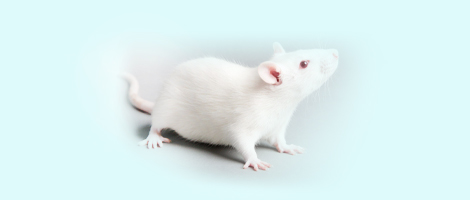| 1 |
HUANG G, YE L, DU G, et al. Effects of curcumin plus Soy oligosaccharides on intestinal flora of rats with ulcerative colitis[J]. Cell Mol Biol, 2017, 63(7):20-25. DOI: 10.14715/cmb/2017.63.7.3 .
|
| 2 |
ZHANG J, CHEN S L, LI L B. Correlation between intestinal flora and serum inflammatory factors in patients with Crohn's disease[J]. Eur Rev Med Pharmacol Sci, 2017, 21(21):4913-4917.
|
| 3 |
NI Q Y, HE X, ZENG B, et al. Variation in gut microbiota of captive Bengal slow lorises[J]. Curr Microbiol, 2020, 77(10):2623-2632. DOI: 10.1007/s00284-020-02035-x .
|
| 4 |
伊丽娜, 刘学聪, 蒋志刚. 非人灵长类肠道菌群组成及影响因素[J]. 动物学杂志, 2018, 53(3):479-494. DOI: 10.13859/j.cjz.201803018 .
|
|
YI L N, LIU X C, JIANG Z G. Gut bacterial composition and its influencing factors of non-human Primates[J]. Chin J Zool, 2018, 53(3):479-494. DOI: 10.13859/j.cjz.201803018 .
|
| 5 |
BAILEY M T, COE C L. Maternal separation disrupts the integrity of the intestinal microflora in infant rhesus monkeys[J]. Dev Psychobiol, 1999, 35(2):146-155.
|
| 6 |
NI Q Y, ZHANG C, LI D Y, et al. Effects of dietary alteration on the gut microbiome and metabolome of the rescued Bengal slow loris[J]. Front Microbiol, 2021, 12:650991. DOI: 10.3389/fmicb.2021.650991 .
|
| 7 |
简平, 王强, 王剑, 等. 不同年龄段川金丝猴肠道菌群结构差异分析[J]. 动物营养学报, 2015, 27(4):1302-1309. DOI: 10.3969/j.issn.1006-267x.2015.04.037 .
|
|
JIAN P, WANG Q, WANG J, et al. Difference analysis of gut microbiome of Rhinopithecus roxellana in different ages[J]. Chin J Anim Nutr, 2015, 27(4):1302-1309. DOI: 10.3969/j.issn.1006-267x.2015.04.037 .
|
| 8 |
朱华, 肖冲, 尚海泉, 等. 基于高通量测序的不同年龄恒河猴肠道菌群结构差异分析[J]. 中国实验动物学报, 2019, 27(1):72-78. DOI:10.3969/j.issn.1005-4847.2019.01.012 .
|
|
ZHU H, XIAO C, SHANG H Q, et al. Analysis of gut microbiomes of rhesus macaques of different ages by high-throughput sequencing[J]. Acta Lab Anim Sci Sin, 2019, 27(1):72-78. DOI:10.3969/j.issn.1005-4847.2019.01.012 .
|
| 9 |
张飞燕, 金洁, 刘超, 等. 基于高通量测序技术测定普通棉耳狨猴粪便微生物多样性[J]. 中国实验动物学报, 2019, 27(3):366-373. DOI: 10.3969/j.issn.1005-4847.2019.03.015 .
|
|
ZHANG F Y, JIN J, LIU C, et al. Analysis of microbial diversity in feces of the common cotton-eared marmosets by high-throughput sequencing[J]. Acta Lab Anim Sci Sin, 2019, 27(3):366-373. DOI: 10.3969/j.issn.1005-4847.2019.03.015 .
|
| 10 |
GAO H, JIANG F, ZHANG J, et al. Effects of ex situ conservation on diversity and function of the gut microbiota of the Tibetan wild ass (Equus kiang)[J]. Integr Zool, 2023, 18(6):1089-1104. DOI: 10.1111/1749-4877.12726 .
|
| 11 |
BARELLI C, ALBANESE D, DONATI C, et al. Habitat fragmentation is associated to gut microbiota diversity of an endangered primate: implications for conservation[J]. Sci Rep, 2015, 5:14862. DOI: 10.1038/srep14862 .
|
| 12 |
ALBENBERG L G, WU G D. Diet and the intestinal microbiome: associations, functions, and implications for health and disease[J]. Gastroenterology, 2014, 146(6):1564-1572. DOI: 10.1053/j.gastro.2014.01.058 .
|
| 13 |
CABANA F, CLAYTON J B, NEKARIS K A I, et al. Nutrient-based diet modifications impact on the gut microbiome of the Javan slow loris (Nycticebus javanicus)[J]. Sci Rep, 2019, 9:4078. DOI: 10.1038/s41598-019-40911-0 .
|
| 14 |
FOGEL A T. The gut microbiome of wild lemurs: a comparison of sympatric Lemur catta and Propithecus verreauxi [J]. Folia Primatol, 2015, 86(1-2):85-95. DOI: 10.1159/000369971 .
|
| 15 |
李兰娟. 医学微生态学[M]. 北京: 人民卫生出版社, 2014.
|
|
LI L J. Medical microecology [M]. Beijing: People's Medical Publishing House, 2014.
|
| 16 |
MARTIN R, NAUTA A J, AMOR K BEN, et al. Early life: gut microbiota and immune development in infancy[J]. Benef Microbes, 2010, 1(4):367-382. DOI: 10.3920/BM2010.0027 .
|
| 17 |
潘勇. 肠道菌群与大肠癌发病风险的相关性研究[J]. 中国医学前沿杂志(电子版), 2017, 9(2):88-92. DOI: 10.12037/YXQY.2017.02-18 .
|
|
PAN Y. The study on the relationship between microbial community in intestine and colorectal cancer[J]. Chin J Front Med Sci (Electron Version), 2017, 9(2):88-92. DOI: 10.12037/YXQY.2017.02-18 .
|
| 18 |
高环, 罗彬, 黄兴国. 微生态制剂对生长猪生产性能、养分消化率及粪中微生物的影响[J]. 中国饲料, 2015(15):15-18. DOI: 10.15906/j.cnki.cn11-2975/s.20151504 .
|
|
GAO H, LUO B, HUANG X G. Effects of probiotics on growth performance, nutrient digestibility and fecal microflora of growing pigs[J]. China Feed, 2015(15):15-18. DOI: 10.15906/j.cnki.cn11-2975/s.20151504 .
|
| 19 |
XU B, HUANG Z X, WANG X Y, et al. Phylogenetic analysis of the fecal flora of the wild pygmy loris[J]. Am J Primatol, 2010, 72(8):699-706. DOI: 10.1002/ajp.20826 .
|







 )
)